Graphic design students showcase digital and print media works
Beirut exhibition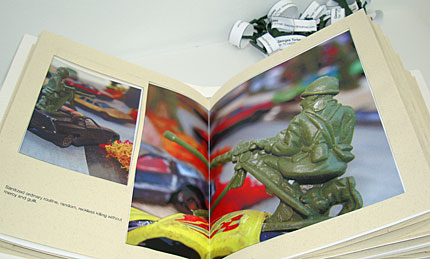 In a book, George Tarabey illustrated the Lebanese Civil War with toy soldiers to symbolize how leaders “played” with people’s lives and contrast a serious event with playful elements.
In a book, George Tarabey illustrated the Lebanese Civil War with toy soldiers to symbolize how leaders “played” with people’s lives and contrast a serious event with playful elements.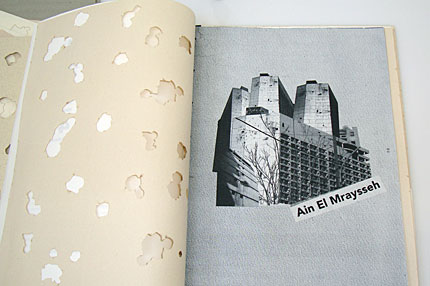 Jana Jammal’s interest in the Lebanese Civil War inspired her vintage-looking photos of Beirut taken this year. By conserving the architecture, she was symbolically preserving the memory of the war. She also created a publication using the photos, which were overlapped with paper that looked like it was pierced by gunfire, created through a laser technique.
Jana Jammal’s interest in the Lebanese Civil War inspired her vintage-looking photos of Beirut taken this year. By conserving the architecture, she was symbolically preserving the memory of the war. She also created a publication using the photos, which were overlapped with paper that looked like it was pierced by gunfire, created through a laser technique.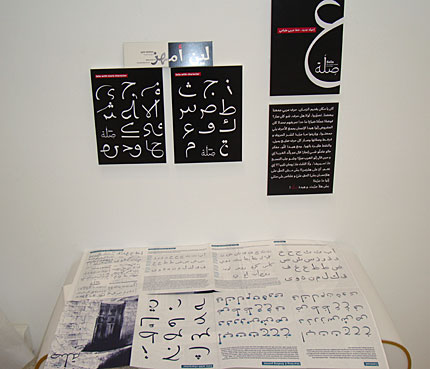 Lynn Amhaz came up with an Arabic digital typeface that she named “Sela” meaning “transition.” Combining modernity and tradition, she tried to bring back the characteristics of the traditional “Naskh” script. She is going to take a type design course in London this summer to continue working on the typeface.
Lynn Amhaz came up with an Arabic digital typeface that she named “Sela” meaning “transition.” Combining modernity and tradition, she tried to bring back the characteristics of the traditional “Naskh” script. She is going to take a type design course in London this summer to continue working on the typeface.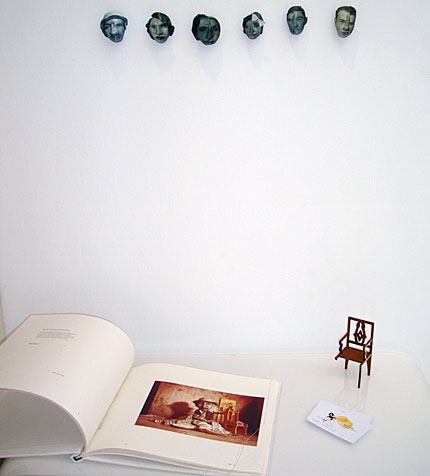 Rami Dally worked on a book called “Six Characters in Search of an Author” inspired by a 1920s play with the same name, where an author neglects characters he has created after writing about them. In a sort of continuation of the play, Dally created sets and photographed the characters, which were themselves collages of old photographs of actual people.
Rami Dally worked on a book called “Six Characters in Search of an Author” inspired by a 1920s play with the same name, where an author neglects characters he has created after writing about them. In a sort of continuation of the play, Dally created sets and photographed the characters, which were themselves collages of old photographs of actual people.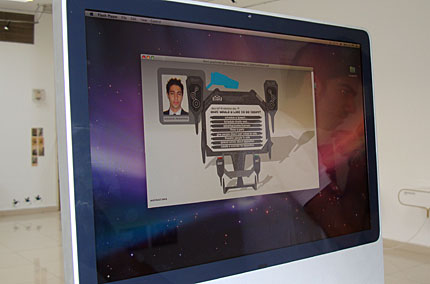 The recent Lebanese parliamentary elections inspired Karim Mokhtar to create an online game where any kind of corruption leads to losing.
The recent Lebanese parliamentary elections inspired Karim Mokhtar to create an online game where any kind of corruption leads to losing.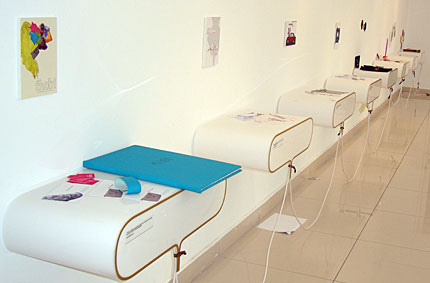 Projects in the Beirut exhibition, called “Loop,” were placed on stands that lit up one by one in sequence around the room.
Projects in the Beirut exhibition, called “Loop,” were placed on stands that lit up one by one in sequence around the room.Byblos exhibition
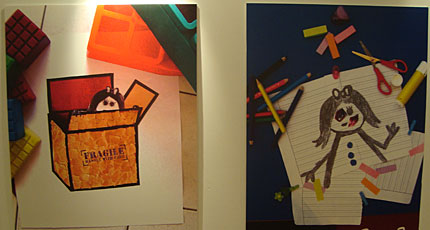 Posters by Byblos graphic design student Celine Dabbous focused on what she described as “child abuse seen from the eyes of kids.” They aim “to show people they should look for the signs [of abuse],” however small they are, she explains.
Posters by Byblos graphic design student Celine Dabbous focused on what she described as “child abuse seen from the eyes of kids.” They aim “to show people they should look for the signs [of abuse],” however small they are, she explains.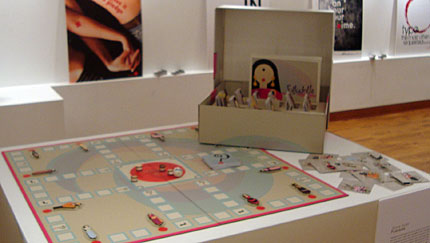 Zeina Imad made an educational board game requiring players to collect dolls from various countries while answering questions about the cultures of the countries.
Zeina Imad made an educational board game requiring players to collect dolls from various countries while answering questions about the cultures of the countries.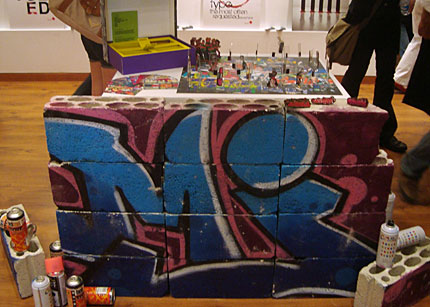 Graffiti on Lebanese streets inspired Juana Baba to make a board game that introduced players to this art form in Lebanon.
Graffiti on Lebanese streets inspired Juana Baba to make a board game that introduced players to this art form in Lebanon.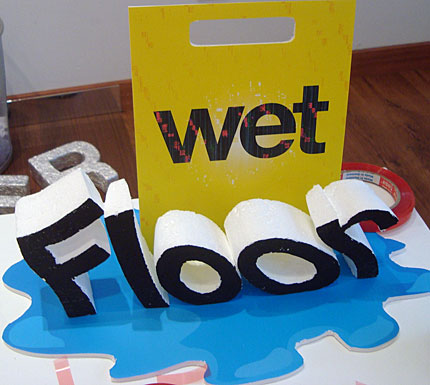 Signs are everywhere we go but Michel Sfeir was bored by their mundane appearance and decided to “give life to typography” by creating new and improved versions.
Signs are everywhere we go but Michel Sfeir was bored by their mundane appearance and decided to “give life to typography” by creating new and improved versions.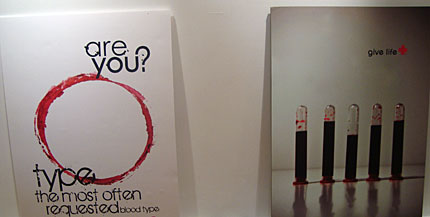 This series of posters encouraged people to donate blood.
This series of posters encouraged people to donate blood. More
Latest Stories
- LAU Family Medicine Graduates to Benefit from a Partnership With Nova Scotia
- AKSOB Assistant Professor Shares Her Vision for the Future of Learning
- LAU Simulation Models Celebrate 20 Years of Learning, Leadership and Service
- The School of Engineering Hosts the Lebanese Electromagnetics Day
- LAU Stands Out on the Sustainability Scores
- Michael Haddad Walks Again for Climate Change and Food Security
- AI in Clinical Practice: Tools, Ethics, and the Human Touch
- Interior Design Students Honor the Past by Designing the Future

